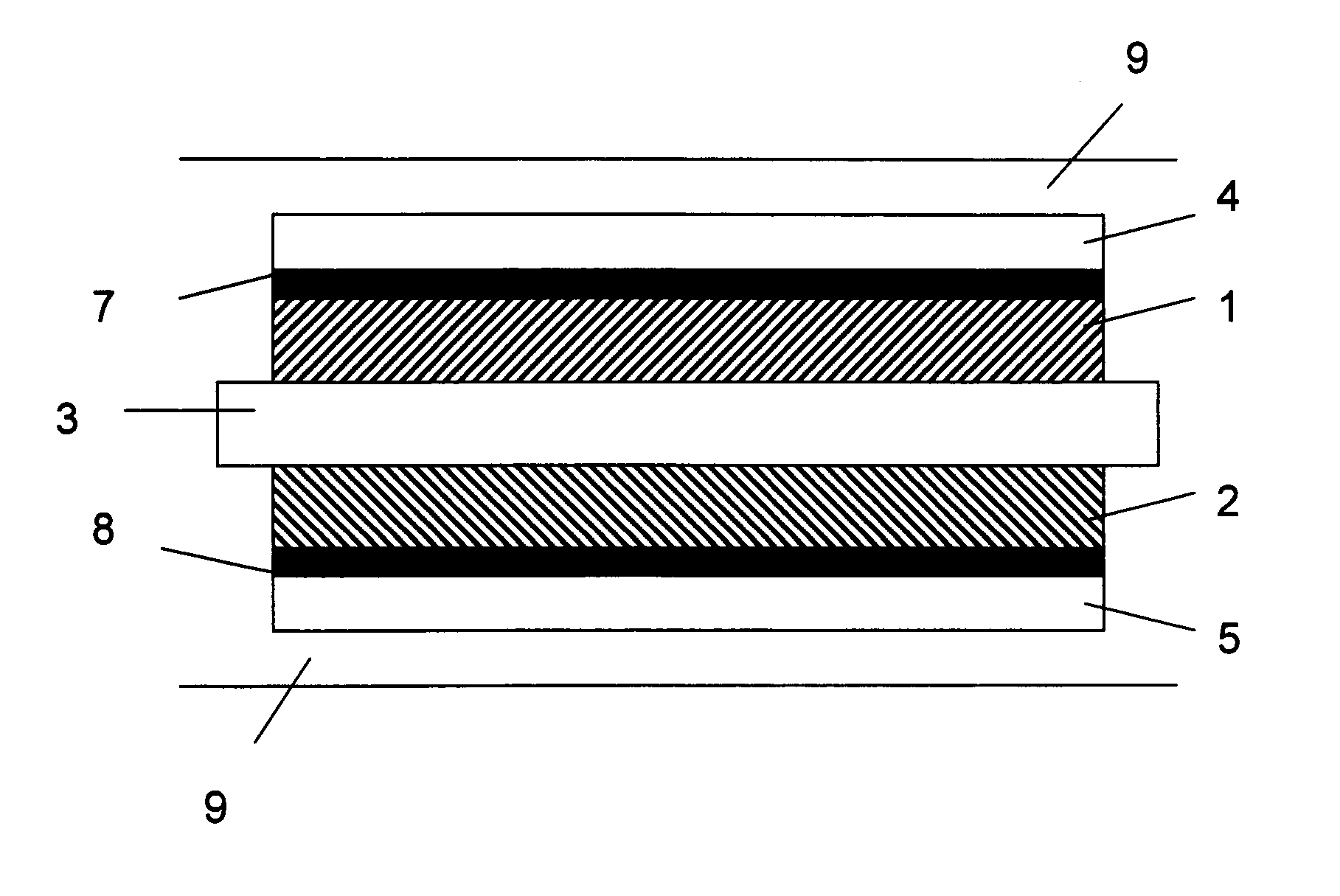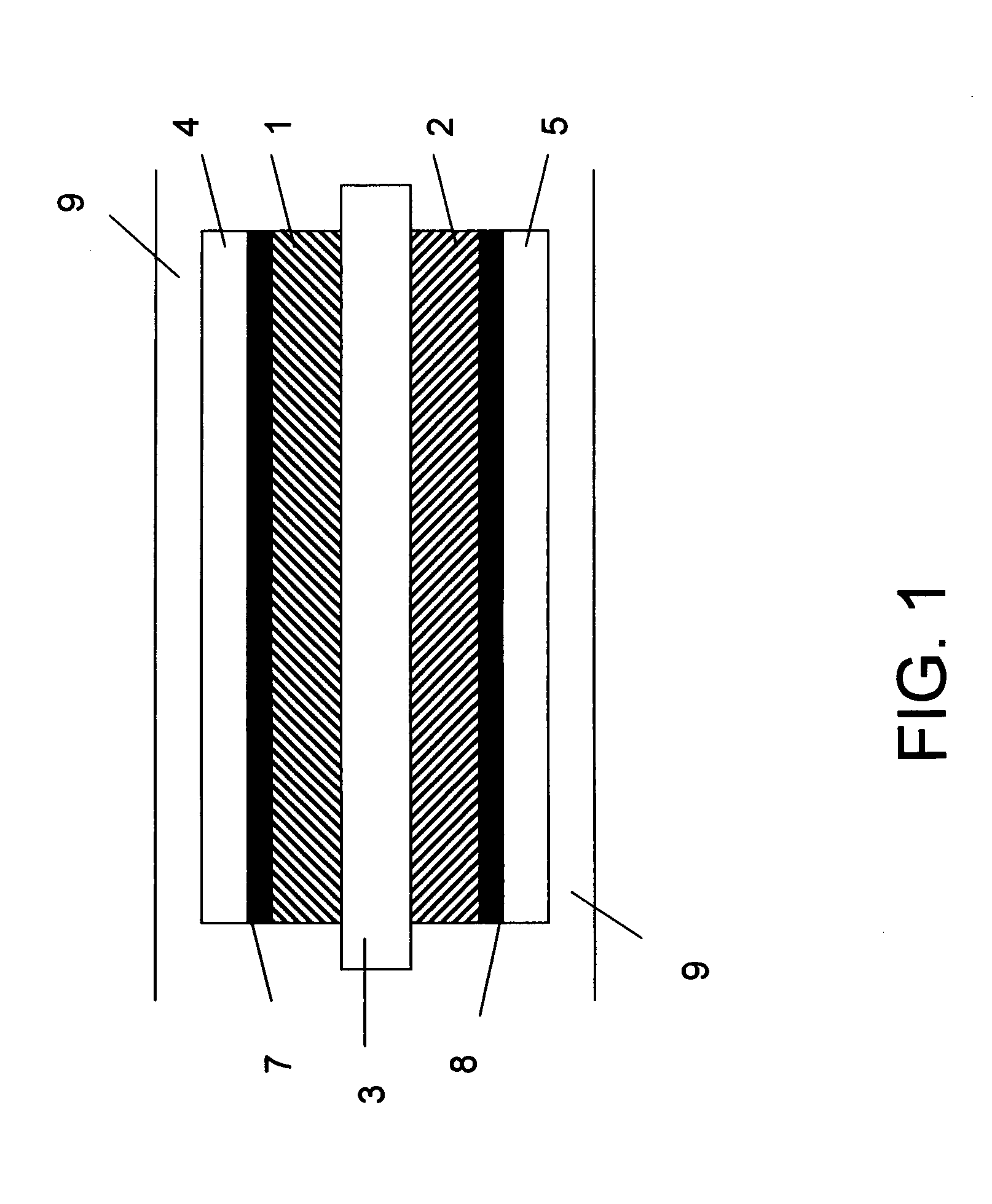Thin battery and a method of manufacturing a thin battery
a thin battery and manufacturing method technology, applied in the field of thin batteries, can solve the problems of difficult application of electrode materials, and achieve the effects of preventing short-circuiting, facilitating battery production, and preventing short-circuiting over the edges
- Summary
- Abstract
- Description
- Claims
- Application Information
AI Technical Summary
Benefits of technology
Problems solved by technology
Method used
Image
Examples
Embodiment Construction
[0052]FIG. 1 shows the different layers of the product in one embodiment of the invention in cross-section. The thin battery of FIG. 1 comprises an anode material layer 7 coated on a paper strip 1 and a cathode material layer 8 coated on another paper strip 2 and a third paper strip 3 there between. The paper strips 1, 2 and 3 form the separator paper layers in the product. The anode and cathode material layers 7, 8 forming the electrodes are covered by collector layers 4, 5 on both sides. The electrodes 7, 8 are in contact to the collectors via the terminals of the collectors 4, 5. The electrical current is fed from the electrodes 7,8 via the collectors 4, 5 to an external circuit. The whole product is further covered in an envelope structure 9.
[0053]The electrodes 7, 8 consisting of the anode and cathode materials 7, 8 are connected to the terminals of the collectors 4, 5 (can not be seen in this cross-section) in order to connect the electrodes 7, 8 to an external circuit. The an...
PUM
| Property | Measurement | Unit |
|---|---|---|
| area | aaaaa | aaaaa |
| weight | aaaaa | aaaaa |
| conductive | aaaaa | aaaaa |
Abstract
Description
Claims
Application Information
 Login to View More
Login to View More - R&D
- Intellectual Property
- Life Sciences
- Materials
- Tech Scout
- Unparalleled Data Quality
- Higher Quality Content
- 60% Fewer Hallucinations
Browse by: Latest US Patents, China's latest patents, Technical Efficacy Thesaurus, Application Domain, Technology Topic, Popular Technical Reports.
© 2025 PatSnap. All rights reserved.Legal|Privacy policy|Modern Slavery Act Transparency Statement|Sitemap|About US| Contact US: help@patsnap.com



